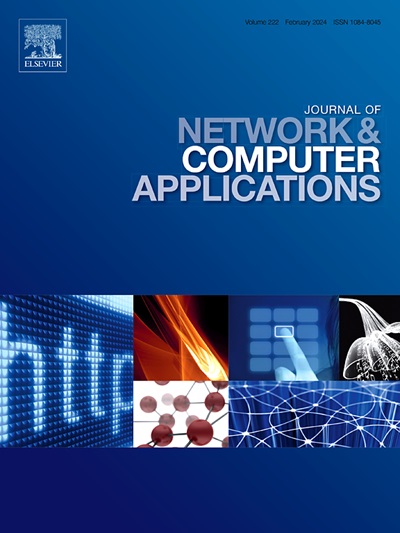Seamless remote roaming activation in LoRaWAN via an API-driven gateway bridge service
IF 8
2区 计算机科学
Q1 COMPUTER SCIENCE, HARDWARE & ARCHITECTURE
引用次数: 0
Abstract
The rapid expansion of the Internet of Things (IoT) landscape, notably in smart cities, smart metering, environmental monitoring, and smart agriculture, highlights the critical need for seamless and efficient device roaming within Long Range Wide Area Network (LoRaWAN) infrastructures. Although LoRaWAN shows great potential, its deployment faces significant challenges, especially under the constraints of the version 1.0 specifications, to enable efficient device mobility. This study introduces a comprehensive approach to enhance LoRaWAN-supported mobility, using three key advancements: the decoupling of Gateways (GWs) from the core network infrastructures to facilitate flexible deployments, the adoption of an adaptive GW-to-network connection protocol responsive to real-time traffic demands, and the enhancement of GW interoperability to provide dynamic and efficient network configurations. A notable innovation of this research is developing a mechanism that enables packet forwarding through an unidentified GW, eliminating the need for pre-established network agreements. The empirical evaluations of the article detail the effectiveness of the architecture in IoT applications, showcasing significant improvements in LoRaWAN’s roaming capabilities and reporting average latencies of up to 0.39 s in experimental tests. Extensive simulations with up to 100 roaming devices and 100 stationary devices further confirmed scalability, keeping the average roaming-to-stationary latency gap below 0.16 s and the worst-case end-to-end delay below 1.2 s even in highly congested scenarios. This contribution addresses pivotal challenges within the current LoRaWAN networks and sets the background for future advancements in IoT network technologies.
通过api驱动的网关桥接服务在LoRaWAN中无缝远程漫游激活
物联网(IoT)领域的快速扩张,特别是在智慧城市、智能计量、环境监测和智能农业领域,凸显了对远程广域网(LoRaWAN)基础设施内无缝、高效设备漫游的迫切需求。尽管LoRaWAN显示出巨大的潜力,但其部署面临着重大挑战,特别是在1.0版本规范的限制下,要实现高效的设备移动性。本研究介绍了一种全面的方法来增强lorawan支持的移动性,使用三个关键进展:网关(GW)与核心网络基础设施的解耦以促进灵活部署,采用响应实时流量需求的自适应GW到网络连接协议,以及增强GW互操作性以提供动态和高效的网络配置。这项研究的一个显著创新是开发了一种机制,使数据包能够通过未识别的GW转发,从而消除了对预先建立的网络协议的需求。本文的实证评估详细介绍了该架构在物联网应用中的有效性,展示了LoRaWAN漫游能力的显着改进,并报告了实验测试中平均延迟高达0.39 s。多达100个漫游设备和100个固定设备的广泛模拟进一步证实了可扩展性,即使在高度拥塞的情况下,平均漫游到固定延迟差距也低于0.16 s,最坏情况下端到端延迟也低于1.2 s。这一贡献解决了当前LoRaWAN网络中的关键挑战,并为物联网网络技术的未来发展奠定了基础。
本文章由计算机程序翻译,如有差异,请以英文原文为准。
求助全文
约1分钟内获得全文
求助全文
来源期刊

Journal of Network and Computer Applications
工程技术-计算机:跨学科应用
CiteScore
21.50
自引率
3.40%
发文量
142
审稿时长
37 days
期刊介绍:
The Journal of Network and Computer Applications welcomes research contributions, surveys, and notes in all areas relating to computer networks and applications thereof. Sample topics include new design techniques, interesting or novel applications, components or standards; computer networks with tools such as WWW; emerging standards for internet protocols; Wireless networks; Mobile Computing; emerging computing models such as cloud computing, grid computing; applications of networked systems for remote collaboration and telemedicine, etc. The journal is abstracted and indexed in Scopus, Engineering Index, Web of Science, Science Citation Index Expanded and INSPEC.
 求助内容:
求助内容: 应助结果提醒方式:
应助结果提醒方式:


